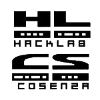MoinMoin comprende un editor grafico. Esso richiede Firefox (1.0+), Mozilla (1.3+), Netscape (7+) o Internet Explorer (5.5+). L'integrazione dell'editor grafico è abbastanza nuova e non banale ed è ancora oggetto di errori1. Sii prudente e salva spesso.
Nonostante il Modo grafico consista in un editor HTML attivo all'interno del browser, il wiki non utilizza HTML internamente, ma una formattazione speciale chiamata "formattazione wiki" (è possibile vederla in "Mostra il testo grezzo" o modificando in modalità testuale). La formattazione wiki è più semplice da modificare del sorgente HTML, ma ha diverse restrizioni:
Nessuna formattazione di testo, collegamenti, immagini, icone, ... all'interno di titoli, collegamenti e la maggior parte dei formati di testo tranne grassetto e corsivo.
Nessun titolo, elenco puntato o numerato, linea orizzontale, tabella, ... all'interno delle tabelle. Utilizza le tabelle per visualizzare i dati, non per il layout della pagina.
L'editor permette solo la formattazione standard, ma è possibile aggirare questa restrizione con dei copia e incolla. Dato che l'HTML deve essere tradotto in formattazione wiki,questo non porta alcun giovamento. Non appena la formattazione non supportata viene tradotta in formattazione wiki, questa sarà ignorata.
CamelCase
Nella formattazione wiki, le parole CamelCase (almeno due parole che incominciano con una lettera maiuscola scritte attaccate) vengono automaticamente tradotte in un collegamento a una pagina wiki con quel nome. Lo stesso avviene nell'editor grafico. Per fare in modo che i collegamenti CamelCase vengano rilevati, basta fare clic sul pulsante Anteprima o salvare la pagina. È possibile evitare i collegamenti CamelCase facendoli precedere da un punto esclamativo.
Utilizzare la formattazione wiki all'interno dell'editor grafico
- apici inversi ("`") intorno al testo (formattato)
- apici (grassetto, corsivo)
- trattini bassi (sottolineato)
- ...
Elementi speciali
Esistono alcuni elementi della formattazione MoinMoin che non possono essere rappresentati come entità HTML proprie nell'editor. Essi sono lasciati come testo semplice e sono colorati in giallo nell'editor, per evidenziarne il significato speciale. Questi elementi sono:
Le macro (vedi AiutoSuMacro)
allegati interni (vedi AiutoSuAzioni/AllegaFile)
Punti esclamativi (!) usati per evitare i collegamenti CamelCase
Il colore giallo è solo per tua informazione e non ha alcun ulteriore effetto. È possibile inserire in questi oggetti del testo semplice, anche se l'editor non li riconosce in modo speciale e non li colora, ma quando la pagina viene elaborata dopo aver premuto Salva o Anteprima, questi oggetti vengono riconosciuti.
Caratteristiche non supportate all'interno dell'editor grafico
- spessore delle linee orizzontali
attributi id, class e style nelle tabelle
- numero di partenza in un elenco numerato
vedi anche MoinMoinBugs/GuiEditor (1)








